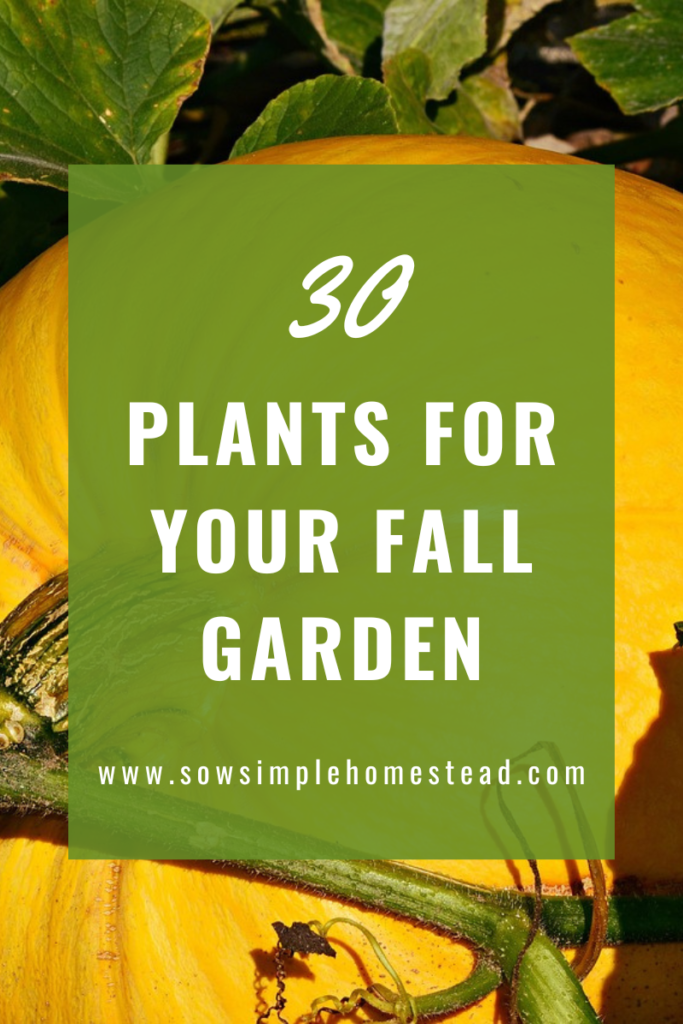
I recall for multiple years wanting to start my garden but choosing not to because “it’s too late.” Spring had passed and in the heat of summer everyone was already harvesting their garden’s bounty. The year I started gardening began in the fall, and it is still my favorite time to grow produce.
Fall gardening is wonderful, because the warm soil allows you to direct sow seeds, and sprouts have maximum sunlight at the start. It’s not too late to start your garden, and the fall is a great time to grow. At the bottom of this post is a handy planting guide with 30 vegetables and their planting dates for several regions!
Why have a Fall Garden?
Many cool weather crops, such as Kale, Broccoli, and Spinach, tend to do better as the temperatures cool down in the fall. The soil is already warm and easier to work, making planting a breeze. Pests also start to wain as the temperatures grow colder, making garden management simpler.
In most temperate regions (Zones 4-8), plants can continue to produce into November and December! With frost tolerant vegetables becoming sweeter after being exposed to below freezing temperatures.
Fall Garden Planning

What should you grow?
The focus for most fall garden vegetables are fast growing plants that are frost tolerant. While not all plants in the fall garden have to fall into this category, plants that take longer to mature or can’t handle a hard frost have to be planted earlier. This ensures the opportunity for a good harvest before temperatures dip below freezing.
Salad greens like lettuce, spinach, and kale , love the cooler weather and mature realatively quickly. They also seem to prefer the cooler weather rather than suffering in the heat.
Quick growing radishes are great for succession planting, as they mature in just 25 days.
Some vegetables like carrots, beets, and peas taste even better after a frost, becoming sweeter in the colder temperatures.
When should you plant?
Now that we’ve gone over a few different plants that would do well in a fall garden, how do you know when to plant them?
We’ll break planting down into x categories: succession planting crops, long season crops, and frost tolerant crops
Succession planting is the process of repeatedly planting a fast growing crop for a continued harvest. This is done by staggering planting dates for a continual harvest rather than a large harvest all at once. Some great vegetables for succession planting are:
- Lettuce
- Spinach
- Radishes
- Carrots
- Bush Beans
Long season crops as the name suggests take a longer time to grow than succession planted vegetables. These need to be started outdoors closer to the beginning or middle of summer to ensure they reach full maturity before the first frost. Some long season crops include:
- Brussels Sprouts
- Oregano
- Parsley
- Thyme
- Corn
- Onions
- Cabbage
Frost tolerant crops are a popular (and my favorite) choice for fall gardening. These vegetables are able to withstand a hard frost and often taste better for it. They can continue growing in many temperate climates into november and december. Some of my favorites include:
- Kale
- Spinach
- Carrots
- Swiss Chard
- Broccoli
- Cauliflower

Fall Crop Care
Crop care in the fall follows a sort of reverse cycle of the spring. With planting starting in the hottest time of year, watering is extremely important in the beginning to ensure good germinationa and development. As summer turns to fall, you may be able to cut back on watering as the weather grows cooler and (at least in my region) it rains more often.
The garden doesn’t have to end with summer. Growing in the fall is a great way to extend your harvest and make it all the sweeter.


